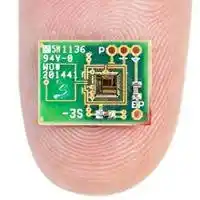افشین رشید
اُستادیار ؛ عضو هیات علمی دانشگاه آزاد اسلامی واحد علوم و تحقیقات تهران
570 یادداشت منتشر شدهSelf-assembly Methods in Nanoelectronics
14 شهریور 1404 - خواندن 2 دقیقه - 56 بازدید

Note: Nanoelectronics self-assembly technology is considered one of the world's leading technologies.
Today, increasing data storage capacity, increasing its transmission speed, and shrinking the dimensions of electronic devices, especially transistors, is of great importance because shrinking the dimensions of electronic devices, in addition to increasing processing speed, also reduces power consumption, and nanoelectronics can be a key to achieving smaller dimensions.To become more familiar with this technology and to gain a deeper understanding of the various phenomena that occur at the nanometer scale, and as a result, to analyze the results in detail and refine the self-assembly methods in order to produce new sample properties and appearance. Another goal is to design and manufacture components that take advantage of the capabilities of quantum mechanics. Quantum computers and their realization are other goals.

Note: In fact, it can be said that expanding the understanding of self-assembly methods of particles is a way to design complex structures to perform predefined tasks.
Developing a better understanding of how particles self-assemble to do things more cheaply, which in turn requires solving communication problems and replacing transistors. Today, single transistors with a gate length of 40 nanometers are made of silicon.Transistors with gate lengths less than 25 nm have also been made with gallium arsenide. In the compact network of such transistors, the current flowing into the transistor is reduced due to the thinner interconnect wire. This is one of the obstacles to miniaturization that is not related to the transistor structure.